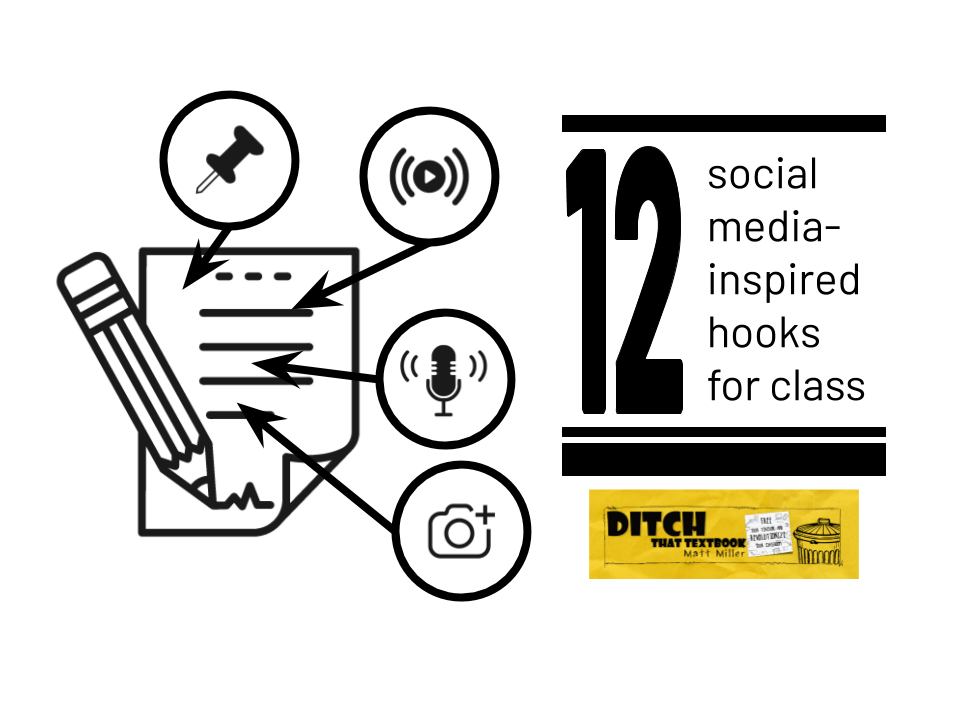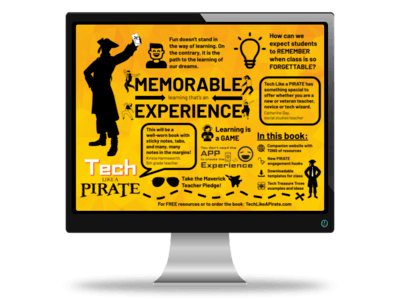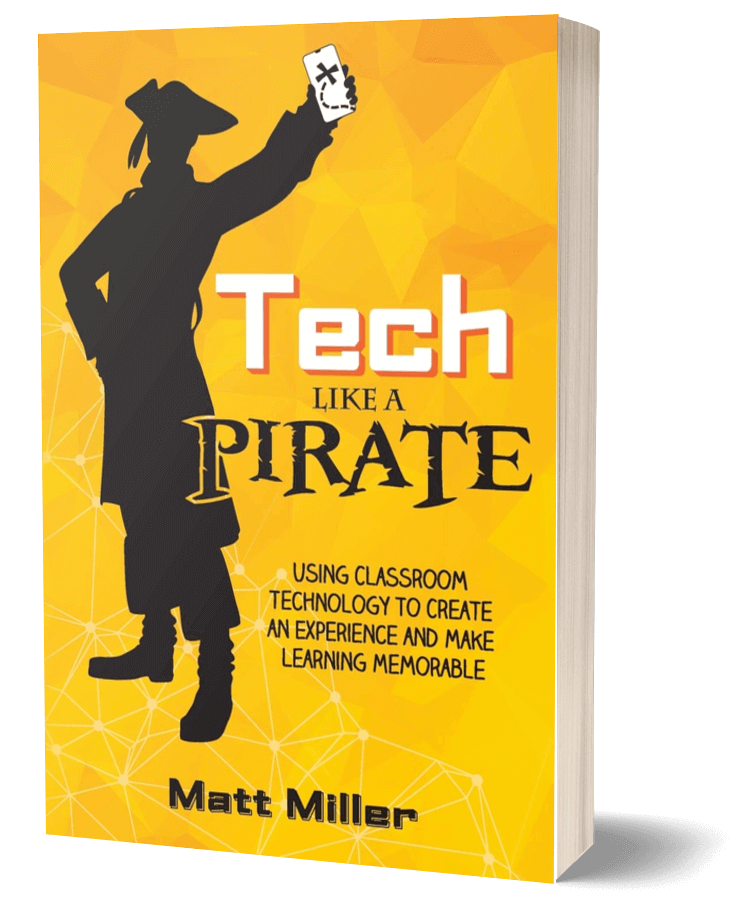
Each social media platform grabs our attention in different ways. Here are some ways to use those hooks to engage students.
Social media is everywhere. Each social media platform has its own characteristics.
Images are the strength of Instagram and Pinterest.
Video is where TikTok and Twitch shine.
Quick, easy communication is what sets WhatsApp and Voxer apart -- both in different ways.
The dating app Tinder even has its strengths -- and (gasp!) we can play to them in class activities, too.
Each social media platform has something that makes it innately different. That uniqueness is what its fan base really loves about it. When social media platforms hang around, it's because something is working.
Let's use that.
We can put our finger on what makes these successful social media platforms unique. Let's call those their hooks. We don't need the social media app to create the unique experience. When we understand the hooks, we can use them to create unique activities that engage students in the same way their favorite social media platforms do.
In this post, we'll take a look at 12 social media platforms and what their hooks are -- what makes them unique. Then, we'll look at how we can use them in the classroom.
Have a suggestion for another hook -- or another way one of the hooks can be used? PLEASE leave it in a comment at the end of the post!
Text message and WhatsApp
The hook: Instant communication
Adults and kids alike love text messaging -- and messaging tools like WhatsApp -- for instant connection. Want to ask a quick question and get a quick answer? Want to share what's going on in the moment? This is the medium you use. That real-time communication can be part of class, too.
Instagram Stories
The hook: Visual storytelling
Instagram Stories have gotten popular because they make visual storytelling quick and easy. They string images and quick videos together for a vivid recap of your day. Retelling a science lab, a group project, or a lesson from class through visual storytelling can be fun and powerful.
The hook: Tweet threads
Twitter is all about brevity. Tweets were once 140 characters. Even at 280 characters, you have to be concise. Unless you create a thread! Threads are a string of tweets (one tweet, reply to that tweet, reply to that tweet, etc.). They can combine text, images, links, etc., to get a bigger idea across.
Twitch, YouTube Live, Periscope
The hook: Nested conversations
Reddit is all about the replies. Someone will post a question or an idea. Then Reddit users will reply. The way the replies are organized -- in threads, or nested replies -- is what makes Reddit unique. It looks crazy and overwhelming at first, but the organization of the replies is very tightly organized -- and can lead to great discussion. Nested conversations can be pretty easy to create for the classroom.
Tinder
The hook: Judging good/bad
Yep. I just went there. "Match. Chat. Date." The underlying hook that makes Tinder unique: swipe right to like, swipe left to dislike. What makes it good? What makes it bad? Justifying those judgments is critical thinking at its core. Use this one at your own discretion! You know your students and if it'd be a good fit or not.
The hook: Connections
LinkedIn is the place to be in the business world. It's your online resume and a networking hub. LinkedIn thrives on connections. You have first-degree connections (contacts) and extended connections of people you know. Your students may not use LinkedIn yet, but they may in the future. Seeing how people and ideas connect is valuable.
The hook: Collections and curating
Lesson plans. House plans. Recipes. Costumes. Let's admit it. We have LOTS of reasons to be on Pinterest. It's popular because of the collections. We can collect ideas and keep them organized. The heart of that is curation. A museum curator picks the best alike pieces and shares why they made the collection. Sounds like a great approach for the classroom.
Voxer
The hook: Quick audio collaboration
Voxer turns your cell phone into a smart digital walkie talkie. Connect with an individual person or a group. Record and listen to audio messages instantly or on your own time. Audio is great for multitasking -- listening while you're doing something else. Sharing ideas with audio may be the right fit for your class.
Yelp
The hook: Evidence-backed reviews
The heart of what makes Yelp great is critical thinking. We take in all the information and evidence we have about a location. Then we review it, including the good and the bad, and make a final judgment. Writing a Yelp-style review to share a critical thinking judgment could be a lot of fun.

Looking for FREE Tech Like A PIRATE resources?
You’ll find a treasure trove of additional ideas and activities related to the book at TechLikeAPirate.com!
How have you used any of the hooks mentioned above in class? Are there others you would add? Please leave your ideas in a comment below!
For notifications of new Ditch That Textbook content and helpful links:
- like Ditch That Textbook on Facebook
- follow @jmattmiller on Twitter
- check out the #DitchBook community on Twitter
- follow Ditch That Textbook on Pinterest
- subscribe to the Ditch That Textbook YouTube channel!
Interested in having Matt present at your event or school? Contact him by e-mail!
Is Matt presenting near you soon? Check out his upcoming live events!








This is a great tool to explain to educators or parents about the various social media platforms. Many people have no idea. I did a workshop for faculty on TikTok (just as our state banned it on state devices) and short-form video. It was surprising how most had not been on or even realized that they had seen a TikTok video. This will help men introduce other social media.
[…] social-hooks […]
good afternoon
good
hello
[…] Read the full story by Ditch That Textbook […]